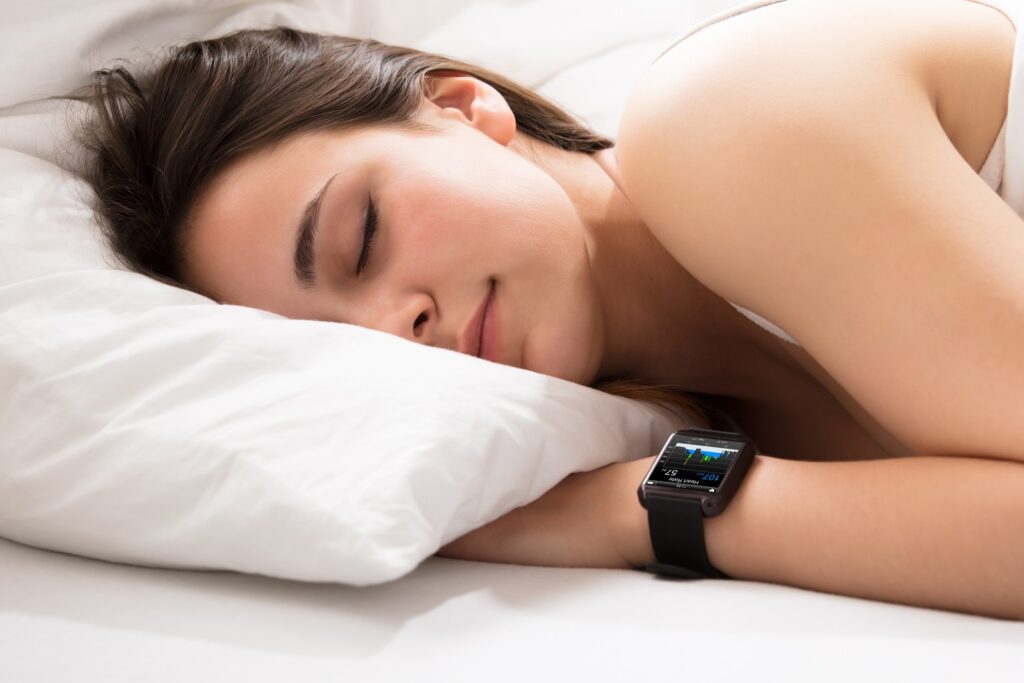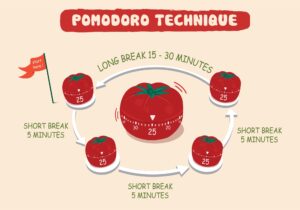The journey through a night’s sleep is a rhythmic dance between different stages, each with its own unique characteristics and functions. With the advancement in technology, particularly the rise of smartwatches, we can now learn more about our complex sleep cycles with advanced sleep-tracking features.
In this era of digital wellness, sleep tracking has become a popular feature in smartwatches. Equipped with sensors and advanced algorithms, these devices dissect the night into different parts. They can help you identify and understand these stages, help track your sleep cycles, and provide valuable insights into your sleep patterns. There are 4 different stages of sleep tracking that you need to know: light sleep, deep sleep, REM sleep, and awake time.
The 4 Different Stages of Sleep Tracking
The integration of accelerometers, heart rate monitors, and even SpO2 sensors enables smartwatches and fitness trackers to detect changes in movement, heart rate, and blood oxygen levels. Smart watches and fitness trackers on the market typically leverage a combination of sensors and algorithms to provide accurate sleep tracking.
In the realm of sleep tracking on your smartwatch, there are 4 different stages of sleep tracking shown on your smartwatch that you need to know: light sleep, deep sleep, REM sleep, and awake time. Let’s go through what these sleep stages mean and how your smartwatch or fitness tracker can track your sleep.
Light Sleep
As night falls, your smartwatch captures the onset of light sleep by analyzing subtle movements and heart rate changes. During this phase, your body adjusts to lower heart rate, breathing, and body temperature in preparation for restorative rest. You can be easily awakened during this stage.
Light sleep is a transitional phase between wakefulness and deeper sleep, symbolizing entry into the realm of rest. It lays the important foundation for a good night’s rest and plays a vital role in physical recovery and memory consolidation. As a precursor to deep sleep, light sleep marks the beginning of the night’s rejuvenating journey.
Deep Sleep
As the night progresses, your smartwatch tracks your progression into deep sleep, checking heart rate variability, body movements, and breathing patterns. This is the stage when your body is most relaxed, your breathing and heart rate are at their lowest, and awakening becomes more difficult.
Deep sleep, also known as slow-wave sleep, is a critical stage for overall sleep quality. During this phase, your body undergoes substantial physical restoration and repair, including tissue repair and regeneration, bone and muscle building, and immune system strengthening.
Getting enough deep sleep not only helps the body recover, but also promotes the brain to absorb new information and adapt to the new environment. By monitoring this stage, you can understand your overall sleep quality and gain insight into how restorative your night’s sleep is.
REM Sleep
What is REM Sleep? While many people are familiar with the terms “deep sleep” and “light sleep,” there’s one sleep stage that often goes unnoticed—REM sleep. REM sleep, or Rapid Eye Movement sleep, is a distinct stage of the sleep cycle, characterized by heightened brain activity, vivid dreams, and, of course, rapid eye movements.
During this stage, your brain is active, your eyes move rapidly, your breathing and heart rate increase, and your muscles become paralyzed. Smartwatches usually pinpoint the onset of REM sleep by tracking your heart rate changes and other data.
Interestingly, REM sleep is a paradoxical stage where our bodies are in a deep sleep state, yet our brains are highly active, with similar activity levels to when we’re awake. It occurs about 90 minutes after falling asleep, accounting for about 20-25% of the entire sleep duration. It’s during this phase that the brain consolidates memories, regulates emotions, and makes significant contributions to cognitive function. Monitoring REM sleep is crucial for understanding cognitive health and emotional well-being.
Awake Time
During the morning crescendo, your smartwatch determines your wakefulness by detecting your movement using various sensors, including heart rate monitors and accelerometers.
This stage represents the period when you are fully awake and alert; Your smartwatch will provide valuable data about your transition from sleep to waking moments. It is important to get enough awake time to allow your body to rest and recover. The sleep data provided by your smartwatch can go some way towards optimizing your wake-up routine, giving you a smoother start to your day.
Understanding the different stages of sleep tracking can help you identify and address sleep-related issues. Using a smartwatch with sleep-tracking capabilities can help you monitor your sleep patterns and get a more complete understanding of your sleep quality. Armed with the knowledge and smart tools like smart watches, sweet dreams await, making every night a truly rejuvenating experience.



